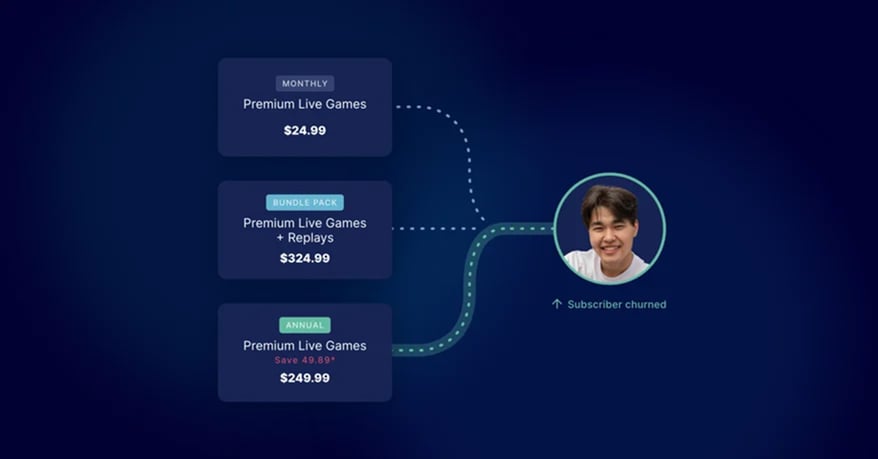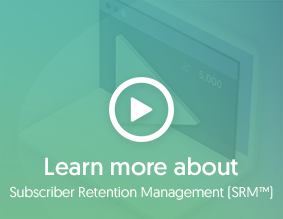
The D2C market is growing phenomenally and altering how the world consumes entertainment content. While this is the bright side, it also means increasing competition that needs to be dealt with correctly.
According to Harvard Business Review research, the fastest and most effective way for any company to realize its maximum profit is to get its pricing right.
Correct pricing helps to acquire new customers and, at the same time, maximize customer lifetime.
For media and entertainment players to stand out in this environment, they need to get a firm grip of the pricing dynamics and charge competitively for streaming services.
The latest research from Omdia spotlights Netflix's strategic decision to cut prices for its subscription plans in smaller markets. With the media giant making this move, does it mean slashing prices is the only way ahead for D2C platform monetization?
Not exactly!
Proper pricing maintains the delicate balance between audience satisfaction provider profitability. But the big question is:
how do you arrive at it?
In this article, we'll discuss D2C subscription platform pricing strategies to help you remain competitive and grow.
What is the ideal pricing for an D2C subscription service?
An ideal D2C subscription platform monetization scheme balances your service's value proposition with the value perceived by the customer while also being in sync with your revenue goals.
Before you set a price for your D2C subscription service, you must delineate your service's value proposition and measure it against what that means for your target audience.
Read More: Value for money plays a key role in D2C subscription success
How to get started with the ideal D2C subscription platform monetization scheme?
Begin by reviewing your platform and making a note of factors such as:
- Content library exclusivity
- Features you offer,
- Overall user experience.
Remember also to be mindful of your target customer's needs and preferences.
What is the best way to do so?
Ask the market.
Market research through surveys and data analysis gives you insights into your target customers’ desires, expectations, and pain points. You can also use Beautifulsoup to extract data from websites, providing additional insights into customer behavior. You can then tailor your value proposition to your customer's needs.
After all, it’s all about ensuring your service meets their expectations before you start looking at the granular details around pricing.
Six steps to help you arrive at the ideal pricing
In this section, we'll take a look at the key steps to consider when setting prices, including calculating costs, defining revenue goals, segmenting the audience, exploring tiered or bundled pricing plans, running pricing experiments, and dynamically adjusting prices based on market conditions.
Step 1: Determine the costs you need to cover
Much like any other economic activity, pricing needs to factor in all your costs to ensure survival.
When calculating this, your costing estimate should include all key expense areas, such as:
- Content licensing or production
- Marketing expenses
- Support cost
- Running the infrastructure for your streaming platform.
Step 2: Single out your revenue goals
Define the revenue you're looking to achieve realistically and factor in the size of a paying customer base that will help you get there.
Consider different pricing models to arrive at a number, such as:
- Gabor-Granger technique
- Van Westendorp Price Sensitivity Monitor
- Brand Price Trade-off
- Conjoint Analysis
- Discrete Choice Analysis
Read more about these models here.
Step 3: Segment your audience into different focused groups
As you build on your pricing, consider segmenting your audience based on:
- Demographics
- Viewing habits
- Preferences
Be open to differential pricing for different segments.
To understand this better, think of a streaming platform that caters to a specific audience in a developed and developing country. The ability to pay the same amount for both groups can differ, depending on their currency and purchasing power.
Remember, not all segments are created equal.
Even with a target audience in the same region, different segments can have different expectations and perceptions of value addition. It means their elasticity of demand or responsiveness to price changes may also be different.
Having granular insights into your audience is highly valuable when planning your differential pricing — the more you know them, the better.
Step 4: Consider tiered or bundled pricing plans
As tempting as it is, umbrella pricing may not work best for revenue optimization in the D2C subscription domain.
Consider tiered plans with different features, content access, or pricing levels to help your customers pick and choose a plan that best fits their needs and budget.
If that is not your cup of tea, we’ve also spotted a growing trend as of late — bundled pricing.
According to research from Mediavision, close to 400,000 households subscribe to a bundled streaming service in Finland. Perhaps bundling different media and access packages will become one of the main aspects going forward.
Step 5: Run pricing experiments on different customer segments
There is no one-size-fits-all pricing model.
Achieving optimal pricing is a result of trial and error.
Experiment and measure the elasticity of demand at different price points. For example, implement a price and closely monitor its impact on:
- Customer acquisition
- Customer retention
- Revenue metrics
Use the data on customer behavior, subscription rates, churn rates, and revenue growth to guide you in finding the optimal pricing for your D2C subscription service.
For the more price-elastic segments, run promotions and discounts to incentivize them to try your D2C subscription service without the barrier of full-price commitment and bring them into the fold.
Take, for instance, the case of Starzplay Arabia. They witnessed a 70% viewership growth during Ramadan, a month of family gatherings and celebrations with friends and families — a pattern they’ve been noticing over the last few years.
Also, consider offering discounts for long-term subscriptions. Coupons and voucher campaigns are also great practical tools for providing targeted discounts and incentives to specific customer segments.
Regardless, make sure your promotions are well-timed because timing is everything to maximize their impact.
Read More: How to use coupons to boost your D2C subscriptions ROI
Step 6: Dynamically alter pricing
Pricing isn't something that you should set in stone.
Be mindful of changes across your target viewership through the experiments above, and consider altering your pricing from time to time if needed.
To amplify revenue generation and customer satisfaction, adjust prices per:
- Real-time market conditions
- Demand fluctuations
- Consumer behavior
For example, increase pricing when you launch high-demand content and reduce it during off-peak periods.
However, it's important to note that implementing dynamic pricing requires sophisticated data analysis capabilities and careful consideration of potential limitations, such as customer backlash or pricing fairness concerns.
In essence, experimentation and flexibility are key to optimal pricing
Getting D2C subscription platform monetization right is critical to succeeding as a D2C subscription provider in today's crowded marketplace. The pricing you choose to offer needs to factor in your:
- Costs
- Perceived customer value
- Profitability goals
While you may use different models to arrive at your optimal pricing, it's essential to go a step further to avoid segmenting a one size fits all approach.
So, we’d say: Start with segmenting your audience, get granular, and experiment creatively with dynamic pricing. In addition, run exciting offers to boost conversions and retention.
Want to leverage the power of data to run the most robust pricing experiments?




